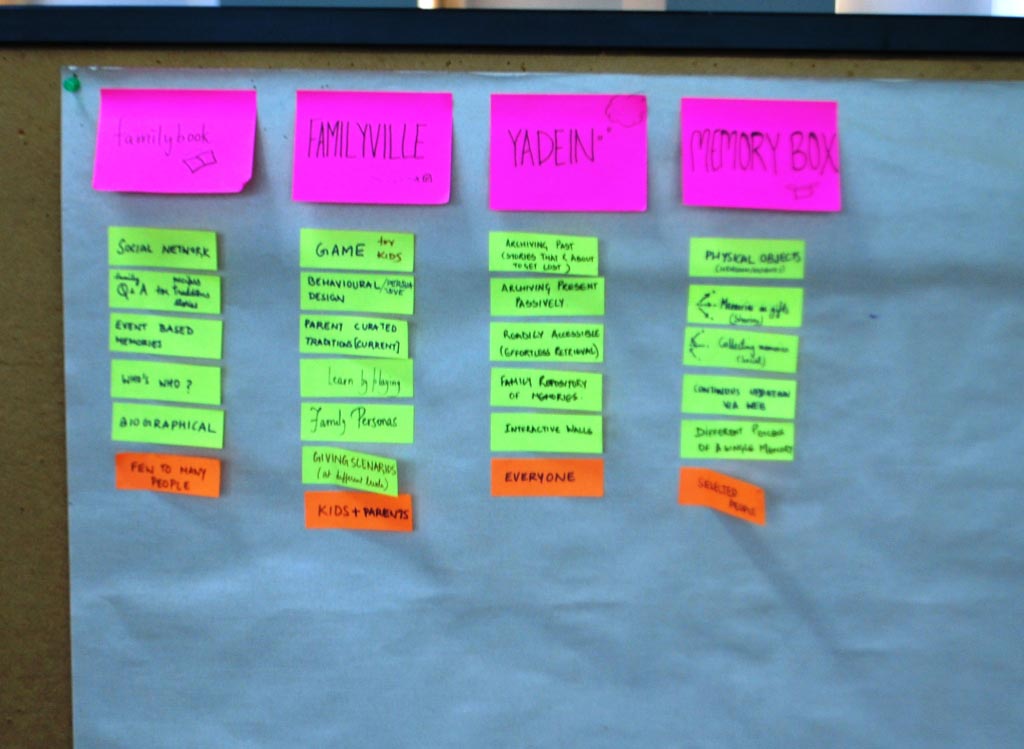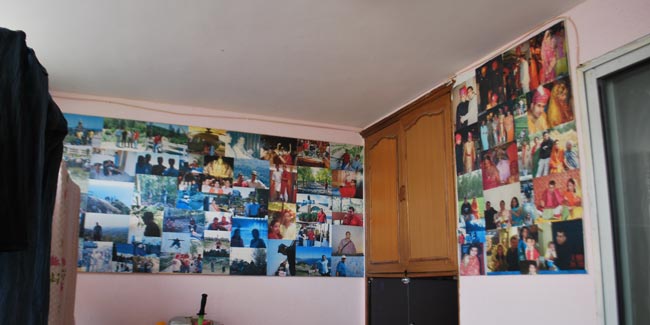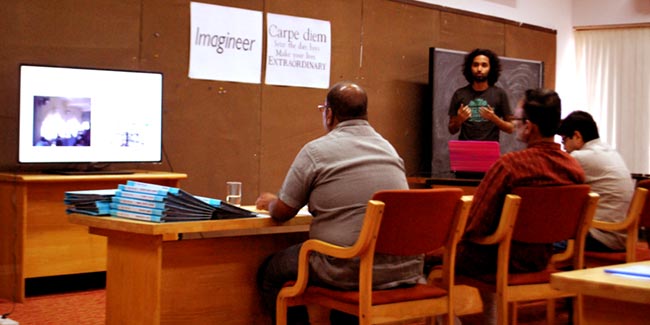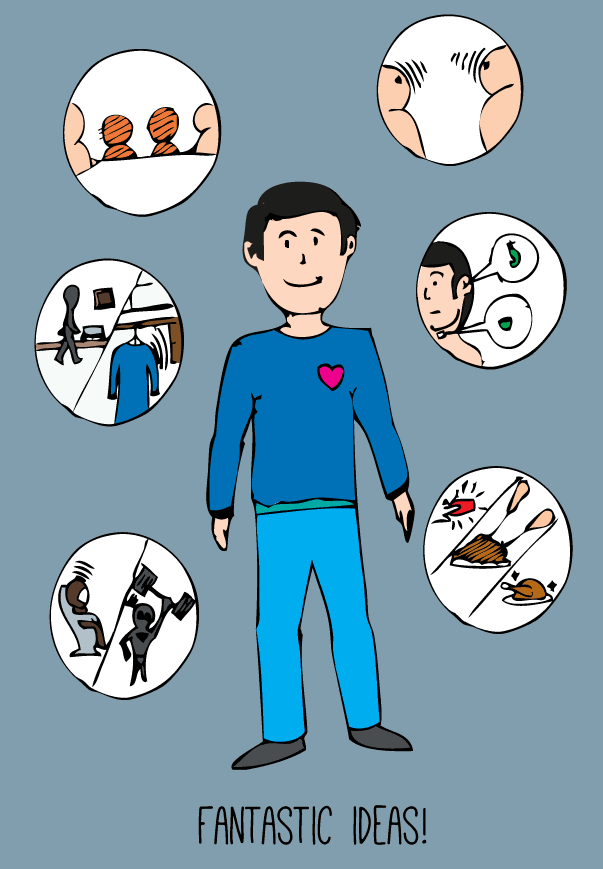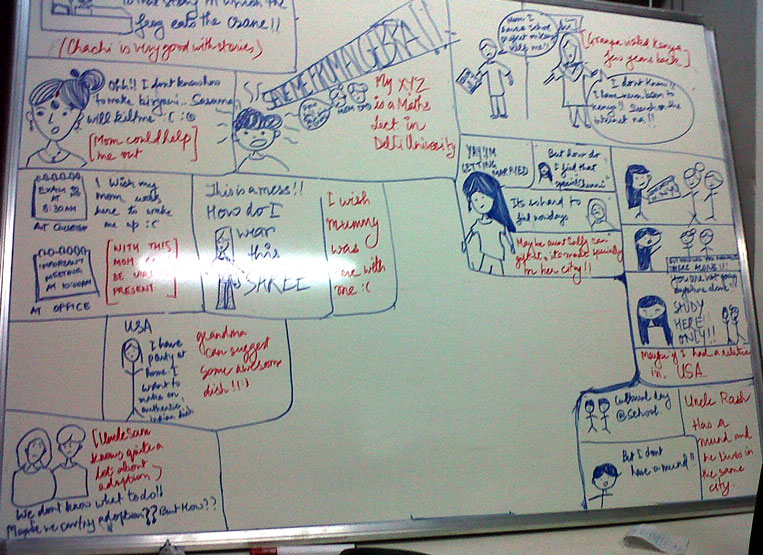Week 9
Written by Kenneth on April 20, 2013.
As we discussed in the previous blog post, we decided to elaborate on the 3 concepts and outline the pros and cons. The ideas changed from their 'original' concepts the more we discussed.
'Simile' was envisioned as a virtual 3d space that lets you explore your family members in a way similar to the game mechanics in 'The Sims' or 'Farmville'. The aim is to learn things by playing. It would be specifically designed for kids in the 'tween'(9-12) years. The Quests would be based on real life events based on social network. Periodically at different levels, you would be introduced to different family members who would give you certain tasks or help you get things done. This would thus help connect distributed nuclear families to create a psuedo joint family.
A Nice Idea but.. The space would need to customized according to each family. It was hard to make relevant engaging tasks and including memories about relatives seemed forceful. Speaking with a game designer friend, Yadu, we were told that introducing family members as fictional characters may distort their perception in the kid.
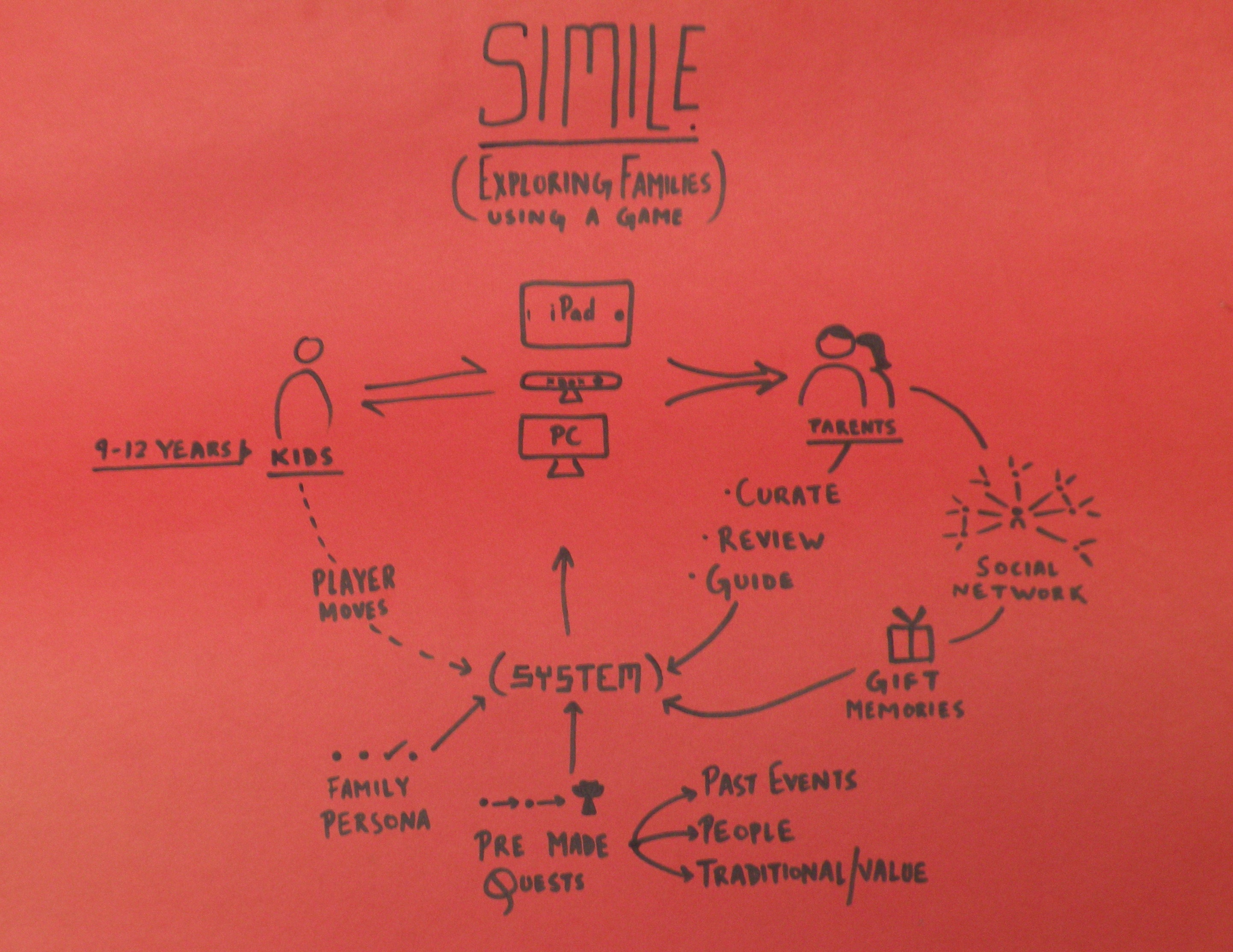
'Treasure Text' was about having that one daily prompt and notification to convey stories/memories. We proposed that it would be cross platform from the web to the simple sms enabled cell phone. The prompts would be based on themes like people, event and object. Thus it would help connect people not yet online and would help you build and maintain a family tree.
A Nice Idea but.. Maintaining the same level of content across platforms would be hard. Photos and videos would not be accessible through sms enabled phones unless with an attached link. This seemed too forceful and exclusive. Further, the aggregated family data could only be accessed via the web interface. Our friends today are more important than some of our relatives, wouldnt we want to add them to this network? There did not seem to be any motivation for someone to add content to this system, leading to leeches in the system.
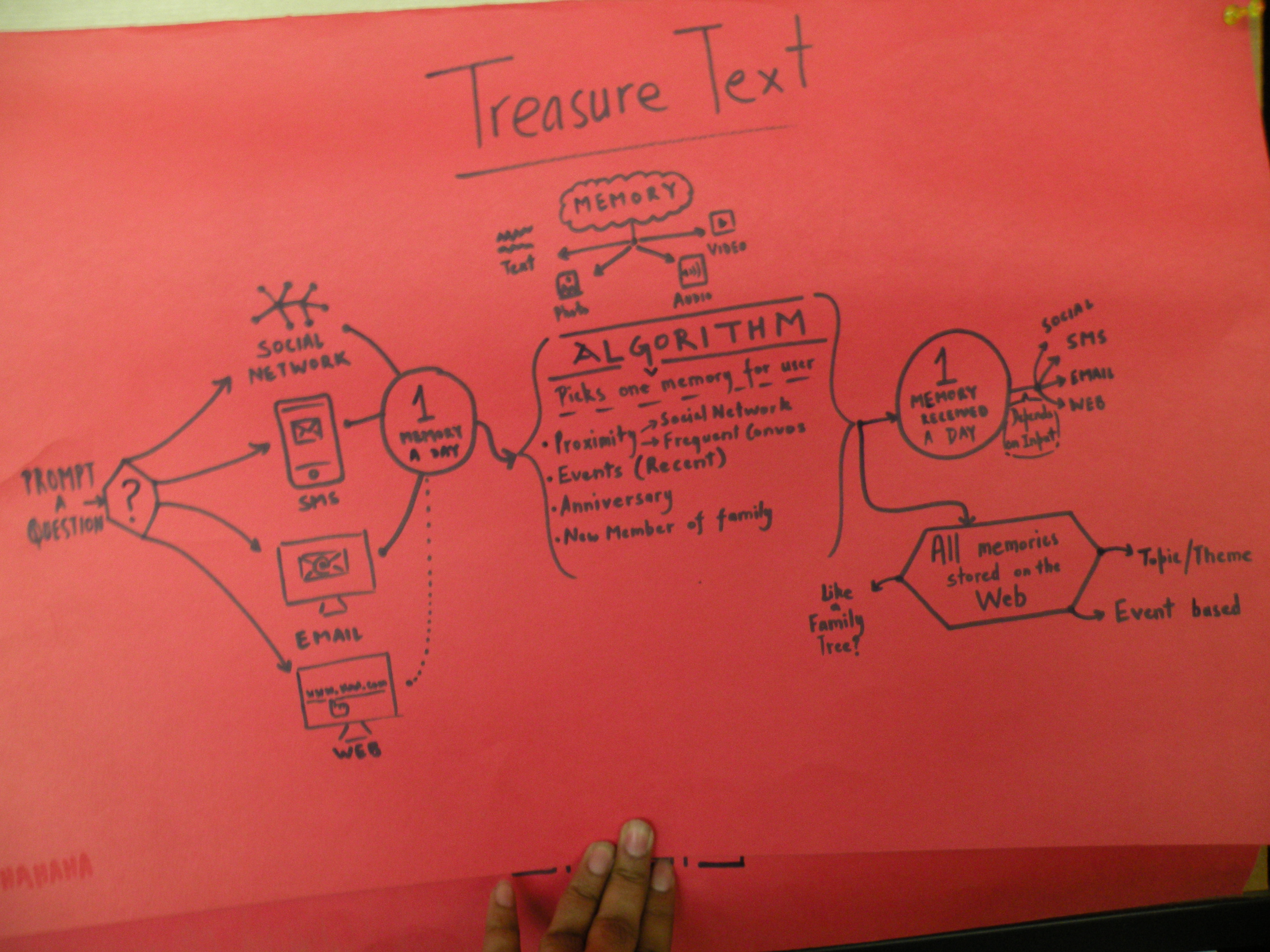
'Gistify' seemed the most 'straight forward' idea. It basically aggregated content from our network in various forms in order to create a sort of database of content. This was specific for each day, like sending it into a vault with features to get back content as specific periods of time or with options to collate the content into an embeddable form.
A Nice Idea but.. We were not sure how motivated users were to be able to keep contributing on a daily basis. Extracting data from their social media profiles made things easier for us, but we still lost a lot of memories which are not 'web' based.
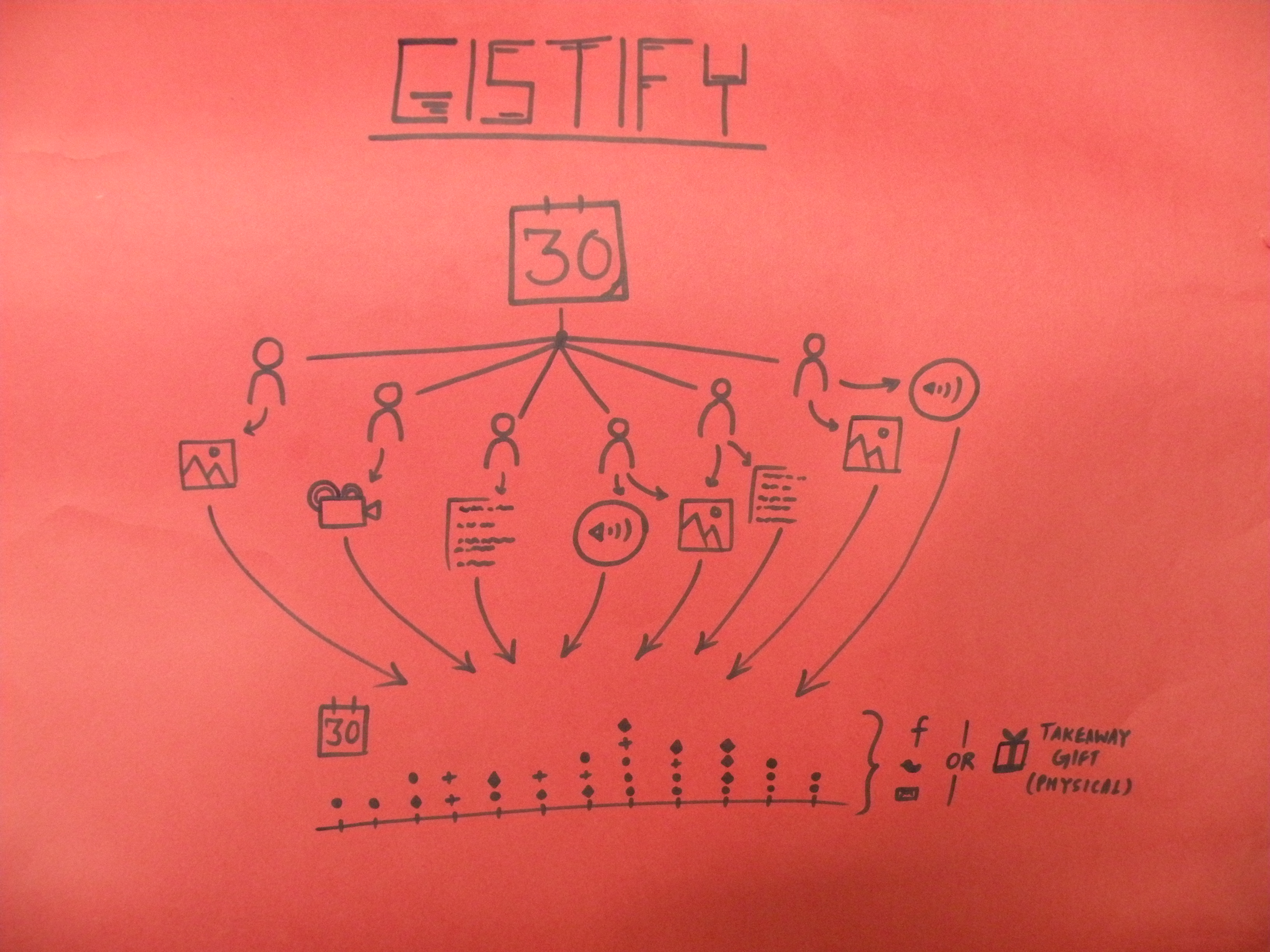
We debated amongst ourselves and decided that the core ideas in 'Simile', 'Treasure Text' and 'Gistify' would be what we would want to explore more.
